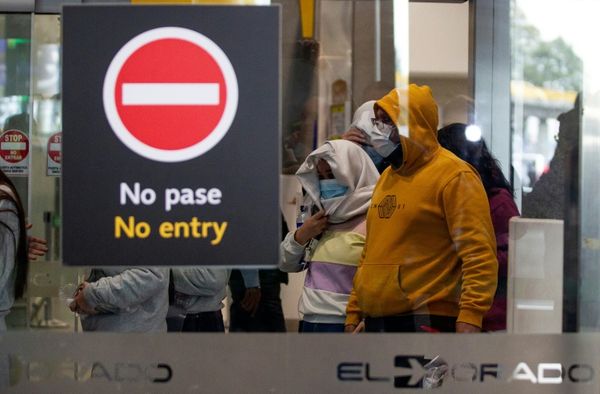
The market exuberance that erupted after the Nov. 5 election is still going strong, even if some of the biggest stocks seemed to lose a step or two.
Nvidia (NVDA) reported great earnings on Wednesday, but the shares actually fell on the week — a whopping 0.02%.
💰💸 Don’t miss the move: SIGN UP for TheStreet’s FREE Daily newsletter 💰💸
Yet, with a market capitalization of $3.476 trillion and a year-to-date gain of 186.7%, the chip giant remains the most valuable company in the world. If barely.
Related: Analyst revamps S&P 500 target for 2025
Apple (AAPL) shares rose 2.2% on the week; its market cap rose to $3.475 trillion. That's "just" $1 billion behind Nvidia.
The major averages finished higher on the week, mostly because Wall Street and investors were excited about what they perceived as a business-friendly Trump administration.
The Thanksgiving holiday in the United States will disrupt the week ahead. There will be no trading on Thursday and a shortened day on Friday.
But don't worry. The bulls will be present and loud every day.
Most of the action will be on Monday, Tuesday and Wednesday.
There will be much to command attention, including an important inflation report on Wednesday and splashy earnings due Tuesday from Dell Technologies (DELL) and CrowdStrike Holdings (CRWD) , Macy's (M) and DICK's Sporting Goods (DKS) .
And bitcoin bulls will try to push the cryptocurrency above $100,000.
Black Friday sales are coming
Other than Thanksgiving itself and many football games, the really big event of the week is Black Friday, the more-or-less official start to the holiday shopping season.
A good shopping season suggests consumers are more confident than they let on, and their confidence will power the economy in 2025.
Related: Target flags startling customer behavior ahead of holidays
The season is critical for many retailers, big and small. They see the biggest share of the annual sales and generate most of their profits.
Total U.S. holiday sales in 2024 may hit around $1 trillion, including purchases made before Thanksgiving.
In addition, Adobe Analytics estimates total online holiday spending will hit $240.8 billion, up 12% from 2023.
The National Retail Federation projects holiday spending will come to $900 per person, and 183 million will do some holiday shopping just between Black Friday and Cyber Monday.

Many eyes will be watching bitcoin prices
The cryptocurrency hit an intraday peak of $99,768 on Friday but failed to top $100,000 for the first time.
Update: It ended Saturday at $97,828. On Sunday, it briefly fell below $96,000 before closing at $96,884, down $944.
Still, given that bitcoin has risen nearly 42% since the Nov. 5 election, is up about 128% in 2024, and counts Donald Trump as a fan, $100,000 may happen Monday.
If that happens, what next? There's talk bitcoin could go much higher.
So could markets overall. There's even hope that the initial public offerings market could suddenly come alive.
But remember: Bitcoin is subject to market ebbs and flows.
Its relative strength index, an indicator of whether something may be overbought or sold, has been above 80 in the last week. Above 80 is an overbought level and is subject to a selloff.
It happened before, in early March, when bitcoin nearly reached $74,000, with an RSI of 86. The uptrend broke, and $74,000 was not reached and topped until Nov. 6.

Inflation — and interest rates — will be front and center
Inflation is never far from the minds of the Federal Reserve. It will be top of mind when the government issues its Personal Consumption Expenditures (PCE) Price Index report for October.
The report focuses on the goods and services people buy and consume in the United States. It's the Fed's preferred inflation measure. In recent months, the overall rate has been running at about 2.1% a year.
More Economic and Market Analysis:
- Top Wall Street analyst unveils unexpected S&P 500 price target for 2025
- October retail sales add further complexity to Fed rate cut bets
- The Best Investors Get Humbled by the Market First
Core PCE (which takes out food and energy costs) is watched most closely. It's been running at about 2.7%. That's also the consensus estimate for October.
The Fed wants to see the core rate move toward its overall inflation goal of 2%. If it's stuck at 2.7% or higher, the pace of interest-rate cuts will slow. Fed Governor Michelle Bowman said this week she wanted the Fed to move cautiously on rates
The Fed is expected to trim its key rate slightly at its Dec. 17-18 meeting. A hot PCE number, however, could force a pause.
That's why the Street estimate of the number of interest-rate cuts between now and the end of 2025 has been falling.
At Friday's close, the 10-year Treasury yield was at 4.44%, flat on the day. But it was up from its September low of 3.62%, just before the Fed started to cut rates. The increase has pushed mortgage rates to about 7%.
Stock market rally is broadening
In the first half of 2024, the S&P 500 Index added about 14%. The Information Technology Sector was up about 26%.
Only the Communications Services sector was close. But that sector's membership includes two tech giants: Meta Platforms (META) and Google-parent Alphabet (GOOGL) and (GOOGL) .
As of Friday, the S&P 500 is up 25.2%.
Related: Google analysts sent scrambling by startling break-up news
The tech sector is up nearly 34%, with Communications Services up nearly 32%. But the growth rates have slowed.
In fact, as of this past week, 2024's top-performing sector is Financials, thanks to huge gains in such stocks as:
- KKR & Co. (KKR) , famed for its leverage buyouts, up 91% for the year.
- Synchrony Financial (SYF) , a spinoff from the old General Electric Company, up 73%.
- Insurance company Progressive (PGR) , up 67%.
The weakest of the S&P 500's sectors is Healthcare.
There's more to say on broadening. The S&P 500 and Nasdaq Composite Index each added 1.7% this week. The Dow Jones Industrial Average was up 2%.
The small-cap Russell 2000 Index, up 4.5% this week, is up nearly 9.6% this month alone. The S&P 600 Index, which is like the Russell, is showing similar results.
Both were given up as dead six months ago
These are investable realities. One can buy the iShares Russell 2000 ETF (IWM) as an example.
Don't forget the risks
Wall Street's public optimism is powerful. But there are still bumps to watch for:
- Slowing job growth.
- Stagnant housing activity.
- Stubborn interest rates.
- Inflation fears resulting from Trump tariffs and possible mass deportations.
- The potential for a broad Middle East War to erupt.
Related: Veteran fund manager sees world of pain coming for stocks







